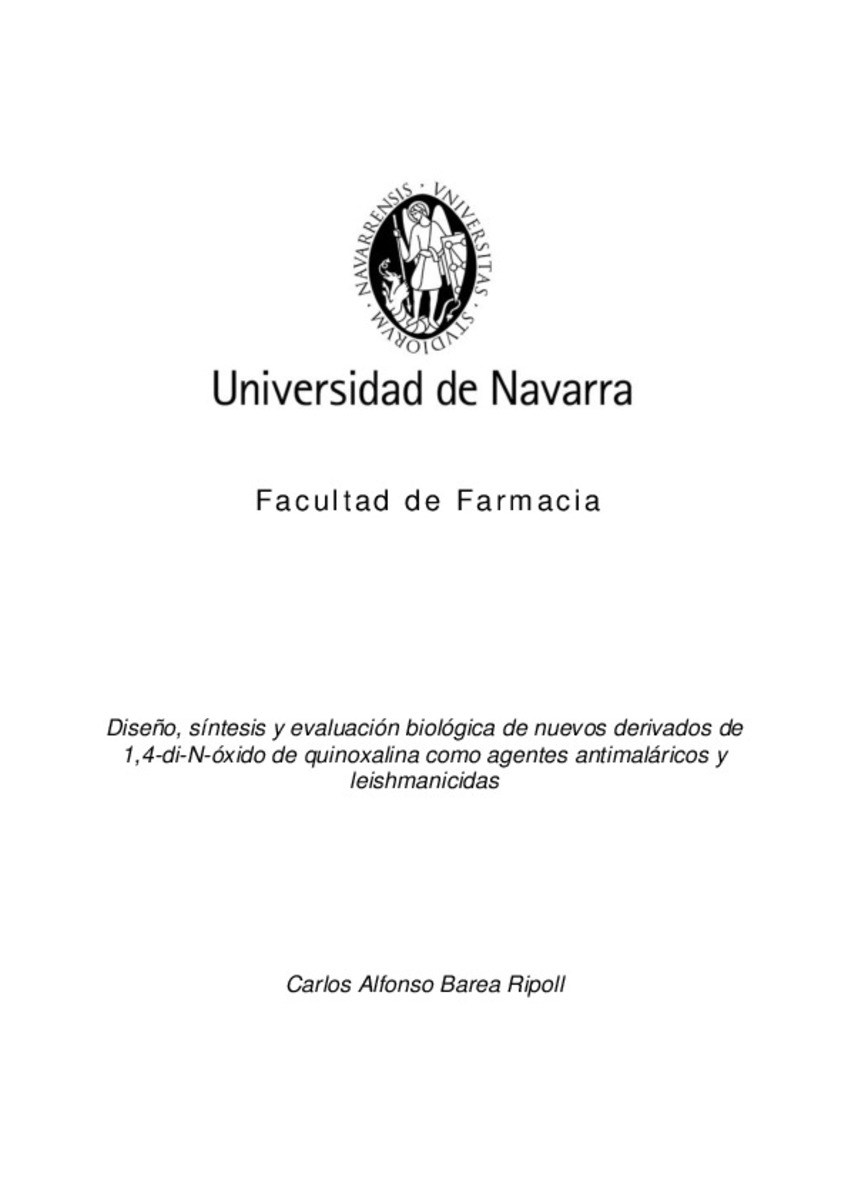Diseño, síntesis y evaluación biológica de nuevos derivados de 1,4-di-N-óxido de quinoxalina como agentes antimaláricos y leishmanicidas
Palabras clave :
Enfermedades olvidadas
Materias Investigacion::Farmacia::Farmacia y farmacología
Fármacos
Diseño
Fecha de publicación :
2015
Fecha de la defensa:
15-mar-2013
Editorial :
Servicio de Publicaciones de la Universidad de Navarra
Cita:
BAREA, C. “Diseño, síntesis y evaluación biológica de nuevos derivados de 1,4-di-N-óxido de quinoxalina como agentes antimaláricos y leishmanicidas”. Aldana, I. (dir.). Tesis doctoral. Universidad de Navarra, Pamplona, 2013
Aparece en las colecciones:
Estadísticas e impacto
0 citas en

0 citas en

Los ítems de Dadun están protegidos por copyright, con todos los derechos reservados, a menos que se indique lo contrario.







